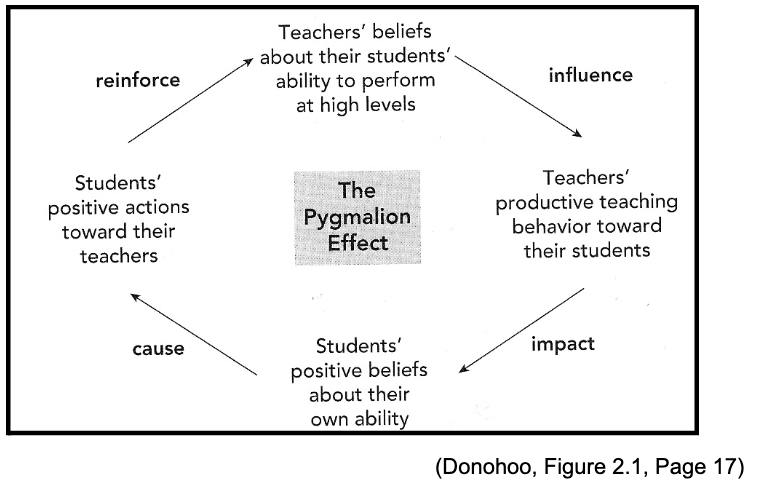Sharon Rendon, Director of Professional Learning, sharonrendon@cpm.org
You may remember the story from your youth about the little engine that could. There is a similar story about teams of teachers who are having the same type of experiences in relationship to student learning. This notion is called collective efficacy or the belief that educators’ beliefs can impact student learning. In her book Collective Efficacy, Jenni Donohoo, describes it this way, “When teachers believe that together they and their colleagues can impact student achievement, they share a sense of collective teacher efficacy.”
This notion of teachers believing they can make a difference has been shown to have a very high effect size in studies by John Hattie. This contribution for student learning comes from the school, not an outside influence. In fact, collective teacher efficacy is double the effect of prior achievement, three times more powerful and predictive than socioeconomic status, three times more likely to influence student achievement than student motivation, concentration, persistence, and engagement, and more than triple the effect of home environment and parental involvement. So you might be asking, This is great, but how might I or my colleagues begin to cultivate or develop this notion of collective teacher efficacy?
Three strategies surface as possibilities for building this belief system for teams of teachers. The first strategy a teacher team can use to increase collective efficacy is to acknowledge success that can be attributed to causes within their control. In other words, when teachers make positive connections between teacher actions and improved student achievement, confidence in the teacher’s ability to effect change is increased. One caution here is not to give up too quickly. Change and effort takes time, so stay committed to the right work and celebrate when increased student learning happens.
A second action that teams can take is to find and observe success in school environments similar to their own. For example, find another school setting or class similar to yours and see what they are doing well. In Oregon, one school found a neighboring district that was having great success with student learning under similar conditions, and they arranged a visit to find out what that successful school was doing. After the visit the team of teachers committed to some of those similar actions. Change is now happening. Identifying others’ successes is a fabulous tool for building collective efficacy.
Finally, cultivation of this belief in teachers or teams occurs when teams are encouraged by “credible and trustworthy persuaders to innovate and overcome challenges.” One might think of this as a knowledgeable cheerleader or someone standing alongside saying, “You’ve got this! And I know how we are going to make this happen!” This person can be found in another colleague, an administrator, and possibly a coach. A leader who advocates for high-quality teaching and learning, designs systems that support instruction, empowers others through a culture of productive professionalism, and monitors and acts on evidence of learning can play a key role in supporting teachers’ efficacy.

Teachers can make a difference. It is possible to overcome all the all the obstacles that are in a students’ way. So when you are discouraged, remember, the mantra “I think we can” can really have an impact on student learning. Stay committed and keep that belief high. Actions you take as a teacher or team of teachers matter!
References:
Donohoo, Jenni. Collective Efficacy: How Educators Beliefs Impact Student Learning. Corwin, 2017.
Dickens, Gillian, editor. Instructional Leadership in Mathematics Education. NCSM, 2019.
Stricklin, Thomas. NCSM presentation: Leading and Coaching for Collective Efficacy. San Diego, CA. April, 2019.
